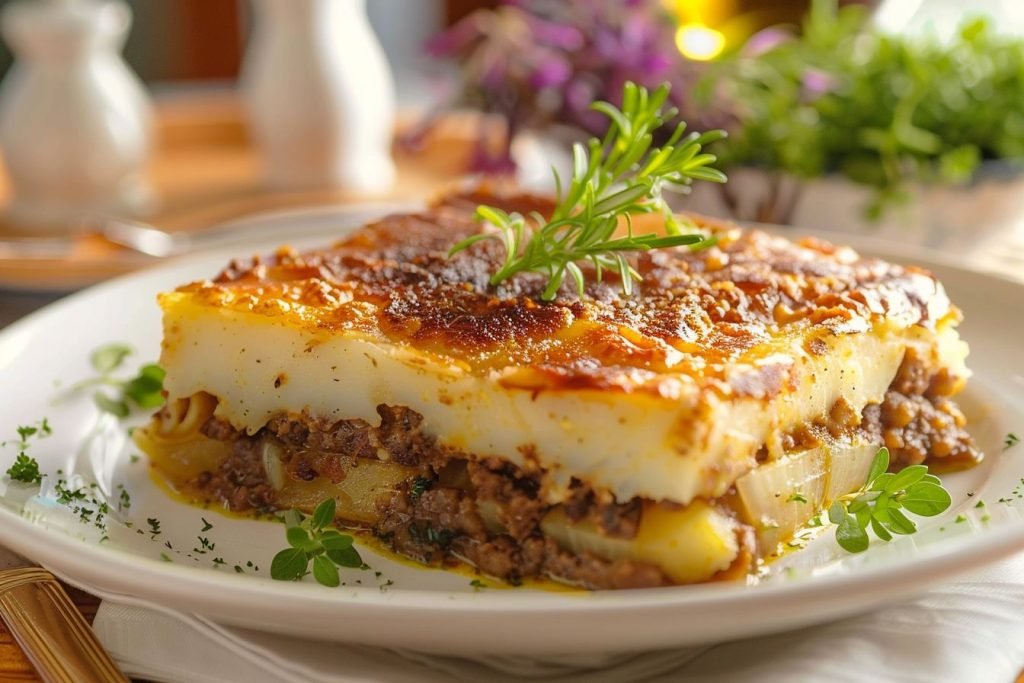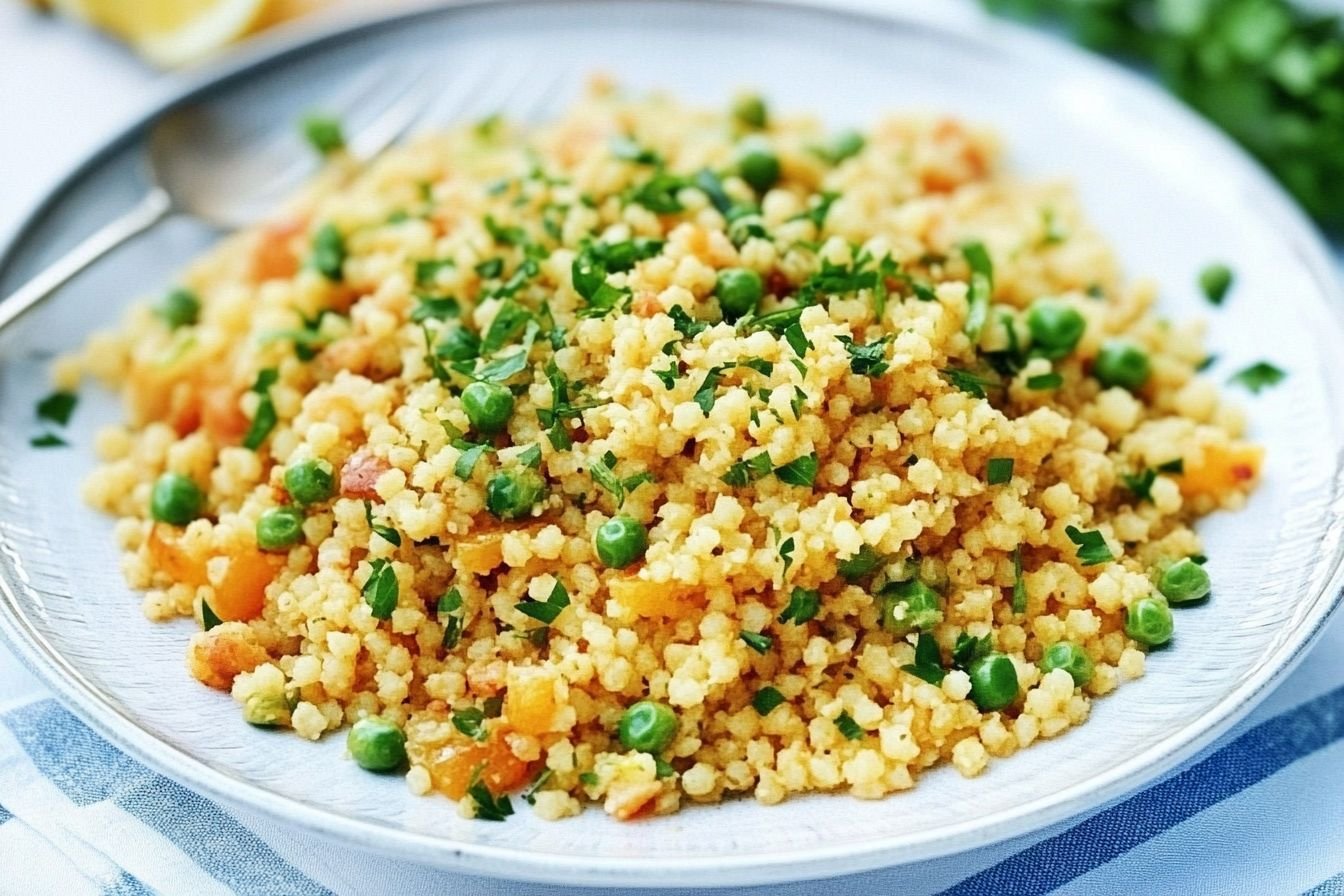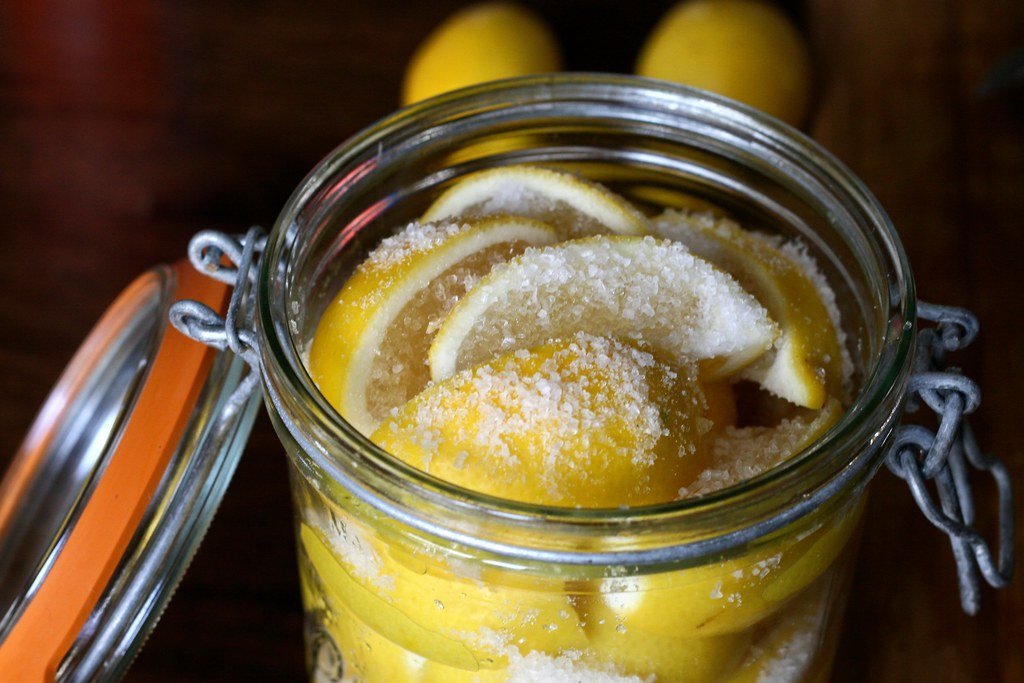Couscous with preserved lemon offers a delightful blend of flavors that brings a unique twist to any meal. This dish combines the freshness of lemon zest and juice, the heartiness of chickpeas, and the nuttiness of toasted pine nuts, creating a satisfying and vibrant experience. I find that the tangy preserved lemons elevate the dish, making it not just simple but truly special.
To prepare this tasty dish, I use chicken or vegetable stock, chickpeas, couscous, olive oil, preserved lemons, toasted pine nuts, and fresh parsley. Combining these ingredients transforms ordinary couscous into a flavorful centerpiece that pairs well with various proteins or can stand alone as a vegetarian delight.
What Is Couscous?
Couscous is a grain made from semolina, which comes from durum wheat. It’s a staple of North African cuisine known for its light, fluffy texture.
I appreciate how versatile couscous is. You can serve it as a side dish, in salads, or as a main course. It absorbs flavors well, making it an excellent base for various toppings and sauces.
To prepare couscous, you typically steam it or mix it with hot water. Here’s a simple overview of its preparation:
- Cooking Method: Steaming or soaking in hot liquid
- Cooking Time: About 5 minutes
- Texture: Light and fluffy when cooked properly
Couscous comes in different varieties, such as:
- Traditional Couscous: Small granules, commonly used in Moroccan dishes
- Israeli Couscous: Larger, rounder granules that resemble pasta
- Whole Wheat Couscous: Made from whole grain semolina, offering more fiber
I find that couscous pairs well with ingredients like vegetables, herbs, and proteins. By adding preserved lemon, I can enhance its flavor and bring a delightful tanginess to the dish.
Ingredients:
- 300g of couscous
- 400g can of drained and rinsed chickpeas
- 400ml of chicken or vegetable stock
- Zest and juice of one lemon
- A glug of olive oil
- 2 quartered of preserved lemons
- 75g of toasted pine nuts
- A handful of chopped fresh parsley
How to make couscous with preserved lemon?
- Begin by simmering stock and chickpeas in a pan.
- After two minutes, add the couscous to a large dish. Pour over the simmered mixture, stir well, cover with cling film, and let sit for five minutes. Fluff with a fork.
- Next, stir in preserved lemon zest and juice, extra-virgin olive oil, preserved lemon chunks, pine nuts, and fresh parsley. Season to taste. The delicious combination of flavors will delight your palate.
Nutritional Information
Amount per serving
| Nutrient | Amount |
|---|---|
| Calories | 299 kcal |
| Protein | 7.8 g |
| Total Fat | 14 g |
| Saturated Fat | 1.2 g |
| Carbohydrates | 31 g |
| Dietary Fiber | 2.9 g |
Serving Suggestions
Garnishes and Add-Ins
Adding some garnishes brings life to couscous. I often use fresh herbs like parsley or cilantro to add color and freshness. A sprinkle of toasted almonds or pine nuts contributes to crunch.
Sliced cherry tomatoes or diced cucumbers provide a refreshing contrast. For a warm touch, you can mix in roasted vegetables such as bell peppers or zucchini.
If you enjoy a bit of spice, a small amount of cayenne pepper or harissa can elevate the flavor profile. Don’t forget a drizzle of extra virgin olive oil to enhance the richness.
Pairing with Other Dishes
This side dish complements various main dishes beautifully. It pairs wonderfully with grilled chicken or lamb, allowing the citrus notes to brighten the meat flavors.
For a vegetarian option, I recommend spicy chickpea stew or roasted eggplant. They create a hearty meal while complementing the couscous’ texture.
Additionally, serving couscous alongside a hearty salad adds freshness and balance. A Mediterranean salad with olives, feta, and greens works particularly well.
Storing and Reheating
I find that storing couscous with preserved lemon is quite simple. After cooking, let it cool to room temperature. Then, transfer the couscous to an airtight container.
Refrigeration: Store in the refrigerator for up to 3-4 days. Make sure the container is sealed well to keep out moisture and odors.
Freezing: For longer storage, I recommend freezing it. Use a freezer-safe container and try to remove as much air as possible. It can last up to a month in the freezer.
When it’s time to reheat, I focus on keeping the texture right. For refrigerated couscous, microwave it for 1-2 minutes. Add a splash of water to keep it moist.
For frozen couscous, I thaw it in the fridge overnight before reheating. Alternatively, I can microwave it directly from the freezer; it will take about 3-4 minutes. Stir occasionally for even heating.
Tip: Adding a bit more preserved lemon or a drizzle of olive oil during reheating can brighten the flavors. Enjoy your dish warm or at room temperature, depending on your preference!
Common Mistakes to Avoid
- Skipping the rinse: I often rinse my couscous before cooking. Skipping this step can lead to clumpy grains. Just a quick rinse under cold water can make a big difference.
- Using too much water: Couscous absorbs liquid rapidly, so using too much can make it soggy. I find that using a 1:1 ratio of water to couscous works best for fluffy results.
- Not letting it rest: After cooking, I let the couscous sit for a few minutes. This resting period allows it to fluff up and prevents it from being gritty.
- Adding preserved lemon too early: If I add the preserved lemon too early in the cooking process, it can lose its vibrant flavor. I wait until the couscous is fully cooked before mixing in the lemon.
- Overloading on spices: While spices enhance flavor, I avoid overwhelming the dish. A balanced approach allows the preserved lemon’s unique taste to shine.
Conclusion
Couscous with preserved lemon offers a delightful mix of flavors and textures. I enjoy how the zesty notes from the preserved lemon brighten each bite.
When I prepare this dish, I like the simple ingredients that combine beautifully. It’s a versatile option, whether as a side or a main dish.
I often find that this dish becomes a favorite at gatherings. Its vibrant flavor profile impresses guests and encourages conversation.
This recipe is based on a recipe from delicious.com
Did you know? This side dish pairs perfectly with moussaka with potatoes and eggplant.
Sounds yummy? Get that recipe now (by clicking the image below):






